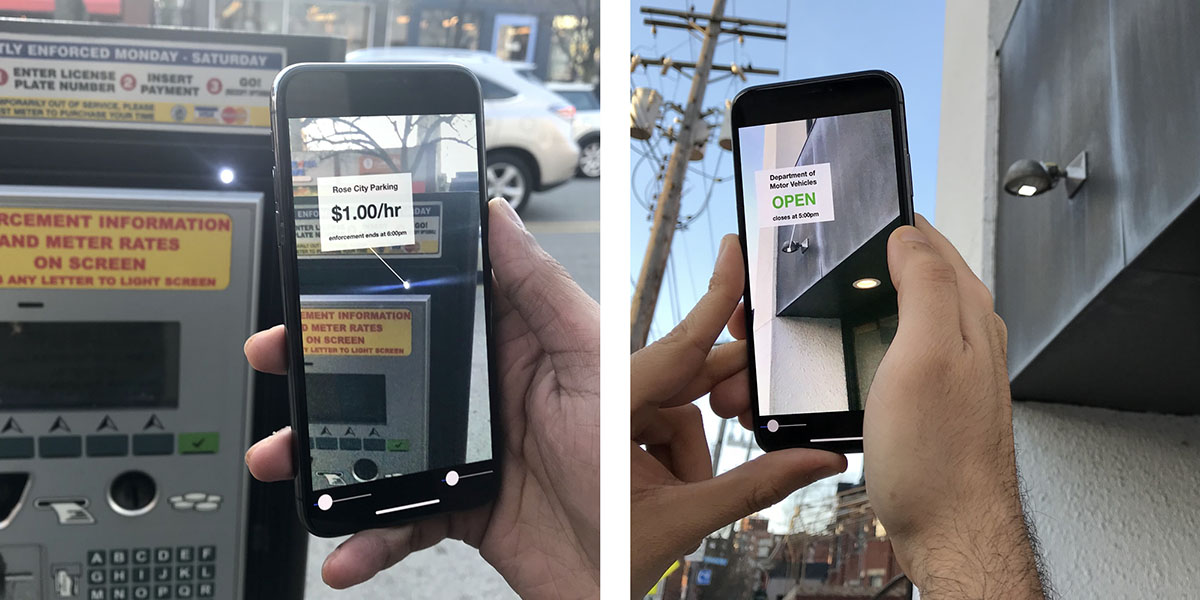SCS Students Chosen as Finalists in Collegiate Inventors Competition Augmented Reality System Exploits Device Status Lights
Byron SpiceTuesday, October 20, 2020Print this page.

An idea for creating augmented reality (AR) overlays by exploiting the status lights on everyday appliances such as routers, power strips and parking meters has landed a pair of Carnegie Mellon University computer science Ph.D. students in the finals of the 2020 Collegiate Inventors Competition.
Karan Ahuja and Sujeath Pareddy, both pursuing degrees in the Human-Computer Interaction Institute (HCII), will present the AR concept, called LightAnchors, to final-round judges in a virtual format on Wednesday, Oct. 28, at the National Inventors Hall of Fame in North Canton, Ohio. Results will be announced on Thursday, Oct. 29.
With LightAnchors, a user can obtain information about a device simply by pointing a smartphone's camera at it. Information such as the guest login code for a router, the privacy policy of a security camera or the parking rate for a parking meter would appear as an overlay on the smartphone screen.
The concept was developed with HCII faculty members Mayank Goel and Chris Harrison and HCII alumnus Robert Xiao, who is now an assistant professor of computer science at the University of British Columbia.
Whereas similar AR concepts have used QR codes or other markers to track objects, LightAnchors takes advantage of existing LED lights and light bulbs on a device, allowing the system to anchor the information overlay on the device. If the status lights are connected to a microcontroller — either existing in the device or added at minimal cost — the lights also can be used to transmit encoded information to the smartphone.
"You can blink these lights in a way that's imperceptible to humans," Ahuja said. "They can blink to tell you whatever information you want."
The research team first presented their work a year ago at the ACM User Interface Software and Technology (UIST) Symposium. It remains an active research project, Ahuja noted.
"The vision is pretty big, so we are actively exploring different facets of it," he added. For instance, they are looking at using Bluetooth beacons and other nonlight sources as additional spatial anchors for the system.
Pareddy said they are also working on ways to use lenses to increase the data rates possible with the status lights and are trying to make it a "plug-and-play" system that will be easier for people to implement.
The Collegiate Innovation Competition is particularly attractive, they said, because the judges include a number of influential inventors.
"It's basically a great opportunity to get recognition to propel your idea to a commercial platform," Ahuja said. Neither he nor Pareddy are ready to forsake their academic studies to pursue a startup, he added, "but we hope to drive collaboration to make it into an industry standard and push it out to the world."
Voting for the People's Choice Award of the Collegiate Inventors Competition continues through noon ET on Wednesday, Oct. 28. You can show your support for the LightAnchors team by voting on the competition's website.
Byron Spice | 412-268-9068 | bspice@cs.cmu.edu
